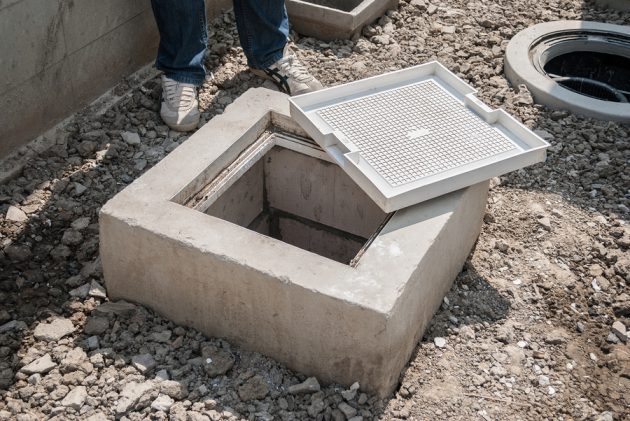Grease Trap Installation Service in Schererville, IN

Grease traps are an important part of many businesses especially those who are in the food industry. Grease traps can trap all fats, oils, grease, and solids. So, even if your business doesn’t use a lot of oil or grease, it is still necessary for solid waste.
It is easy to see how such a device can get backed up, eventually clogging drains and violating local laws about disposal of such waste. Outside grease traps are essential to constant maintenance. Our plumbing experts can set up a plan with your company to service your outdoor grease traps to ensure they are running properly.
The Right Grease Trap Setup At The Right Price For Your Business
Reichelt Plumbing is proud to provide comprehensive commercial plumbing services to our customers. We know how important your business is to you, which is why we are dedicated to working with your existing budgets and requirements to find the solutions you need at a price you can afford. Whether you are running a small restaurant or a large corporation, our team will help you find the right grease trap setup at the right price for your business. From sizing requirements to efficiency standards and maintenance schedules, we are here to help you keep things running smoothly in all aspects of your business’ plumbing. Give us a call to get started!
He was professional, explained everything very well and did an awesome job.





What is a grease trap?
A grease trap is a common plumbing device designed to intercept grease and other solids before they are flushed into the plumbing system. Without grease traps, your pipes can become coated in grease, which cools and leads to extensive clogging. Commonly used by restaurants and food production facilities, grease traps help reduce plumbing issues. There are three types of grease traps: a passive system, in-ground tank system, and GRDs (grease recovery devices), each having their own application. Passive grease traps are small, easy to empty, and the most commonly installed grease trap. In-ground systems are large and consist of concrete, fiberglass, or steel, allowing grease and oils to settle. GRDs automatically remove grease when it is trapped. The type your property would need depends on your specific needs.
Do I need a grease trap?
If you are a restaurant, café, public kitchen, or another type of food provider, you likely need a grease trap. When you clean dishes in your establishment, a lot of solids and grease will probably be washed down the sink. Without a proper grease trap or grease interceptor, you risk serious plumbing issues down the line. A grease trap can easily and quickly be installed under your sink and prevent costly plumbing issues. Local health codes may also require you to have a working grease trap that is regularly emptied and clean. If you have questions about whether you are required to have a grease trap, call your local regulatory agency.
How does a grease trap work?
The most common type of grease traps, a passive grease trap, is a box placed under a sink. As wastewater enters the side of the grease trap, it gives time for the grease, oil, and solids to settle and cool. As the grease cools, it rises to the top of the liquid. The wastewater is then drained out the other side of the passive grease trap. For most small- to mid-sized food establishments, a passive grease trap is sufficient. For larger businesses, an in-ground tank or GRD may be a better option. The grease trap needs to be emptied on a regular basis to keep it working properly. The tanks need to be pumped or emptied when the grease occupies 25% of the tank.
Which businesses require a grease trap to be installed?
Any food service establishment that sells or prepares food to the public would require a grease trap to be installed. You need a grease trap that has at minimum 20 gallons per minute or more than 55 gallons per minute. The size of your trap will depend on the size of your business. Most counties and states have recommendations of sizes you need or will offer assistance in determining the size and type of grease trap you need. If you need a grease trap and you don’t have one installed, you will inevitably have troubles with clogged sewer lines, water backup, and the risk of your business having to be shut down until the expensive repair is fixed. You may also accrue fines or be required to pay repair costs to public sewer lines that were damaged due to grease clogs. If you are unsure if your business requires a grease trap, contact your local regulatory agency or licensed plumber.
Occasionally my grease trap will backup and overflow, why does this occur?
A grease trap needs to be emptied and maintained on a regular basis. Most traps require you to pump or empty your trap once 25% of the trap is full of grease, solids, or debris. With a passive grease trap, this can be once a week. Bigger in-ground units may only need to be emptied once a quarter, or more if necessary. If you do not empty your grease trap, it will start to back up and overflow, leading to a very messy and costly situation. The waste must be disposed of properly according to local and state codes. Many states require you to keep a log of maintenance to ensure you comply. Keeping good maintenance and compliance can prevent backup and overflow from occurring.









